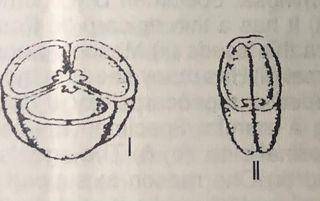(a) (i) identify specimens A. B, C, D and E (ii) To which class of fruits does each specimen belong? (iii) Give two reasons each for your answers (b) Examine specimen C carefully (i) State the agent of dispersal of specimen C (ii) Give one structural feature of specimen C carefully (iii) State the agent of dispersal of specimen C (iv) Give one structural feature of specimen C to support your answer (c) State two advantages of dispersal of fruit and seeds
Name the physical processes responsible for the following (a) entry of carbon dioxide into the leaf through the stomata (b) entry of soil water into the root hair (c) shrinkage of plant tissue in hypertonic sugar solution
Explain briefly how a large quantity of dead organic materials dumped into a river can be harmful to aquatic life.
(a) State two ways in which the mesophyll layer of the leaf is adapted for photosynthesis (b) In the test for starch in a leaf, why is the leaf boiled in warm alcohol?
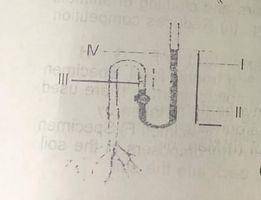
Study the diagram below and use it to answer questions (a)-(d)
(a) Name the set-up illustrated in the diagram (b) What is the apparatus used for? (c) What is contained in the part of the apparatus labelled IV? (d) From which part(s) of the apparatus would the reading(s) be taken after the experiment?
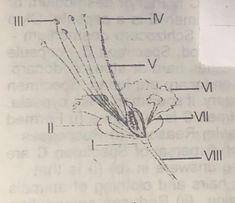
Which of the labellled parts represent the (a) female reproductive system (b) petal?
Specimens I and J are cross-sections of two plants whose cut ends were dipped in red ink or eosin (red dye) for at least 6 hours (a) Observe specimen I with the hand lens provided. Record your observation about the colouring of the tissues by the red ink or eosin.
(a) ldentify specimens E, F, G and H without reason (b) Name one excretory organ found in each o specimens E, F, G and H (c) (i) State the habitats of specimens E and H (i) Examine the limbs of specimen H. List two ways by which specimen H is adapted to the habitat (ii) Make a labelled drawing 8-10 cm long of specimen E
Study specimens A,B, C and D carefully (a) ldentify specimens A and B without reason (b) Name the organism responsible for the damage observed on specimens A and B (c) List two ways by which each of specimens A and B can be properly stored (d) (i) ldentify specimens C and D without reason (i) List one animal or crop each that can be attacked by specimens C and D (ii) Explain how specimens C and D affect the crop or animal they infest (e) Name one way each by which a farmer can control specimens C and D (f) Make a labelled drawing 6-8 cm long of the dorsal view of specimen D.
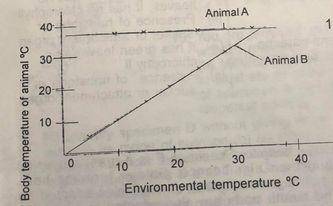
The graph below illustrates the changes in the body temperature of two animal A and B at different environmental temperatures. Study the graph carefully and use it to answer questions (a) to (c) (a) From the graph of the environmental to deductions on the effect of the environmental temperature on the body temperature of the animals indicated as (i) A (i) B (b) Suggest one way by which the animal indicated as B can maintain its body temperature or prevent its body from over-heating (c) Give one example each of an animal whose body temperature can be similarly affected by environmental temperatures cs (i) Animal A (ii) Animal B
List two diseases that may be spread as a result of poor irrigation system.
6. Mention the process by which food can be synthesized in an ecosystem where tnere is no sunlight.
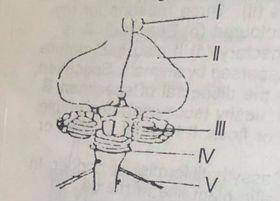
5. (a) Name the parts labelled | – IV (b) Which number indicates a part of the peripheral nervous system?


